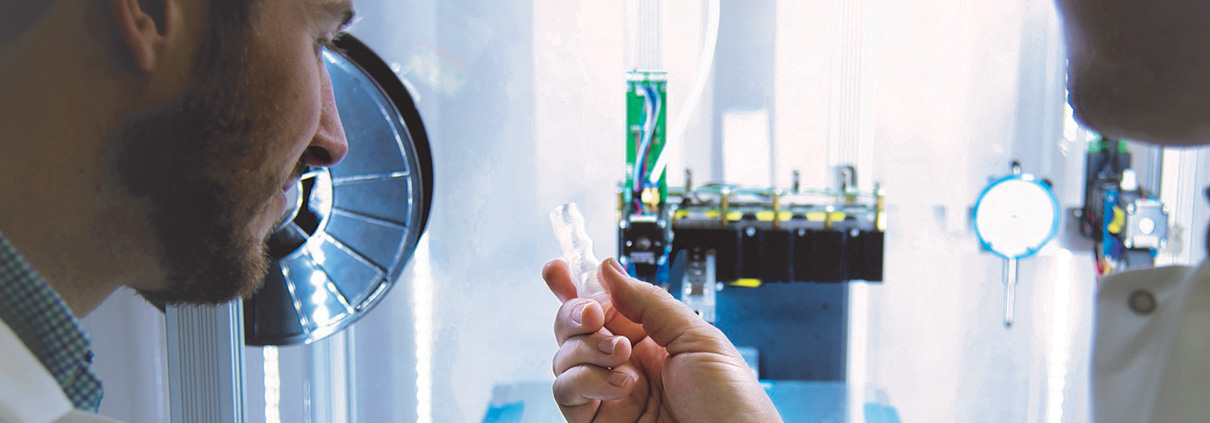Bioabsorbable Polymers: Poly-Med Chairs Workshop on the Use of Absorbable Polymers for Medical Devices
In late January, Poly-Med, Inc.’s Chief Technology Officer, Dr. Scott Taylor, organized and chaired a two-day virtual workshop on the use of absorbable polymers for medical devices sponsored by ASTM Committee F04 on Medical and Surgical Materials and Devices. The ASTM International defines and sets global standards across industries; these standards are used to improve product quality, enhance health and safety, strengthen market access and trade, and build consumer confidence. Standardization is an important factor in the medical field, and being able to lead this committee gives us the platform to influence and help set the optimal standards. Poly-Med contributes using its experience with the development of medical-grade polymers, scaffolds, and devices for use in medical devices and components.
The workshop had three main areas of discussion: 1) Polymer – Device Characterization 2) Novel Polymers and Processes, and 3) Clinical / Regulatory considerations for absorbable polymers for medical devices. As absorbable polymers are designed to degrade in the body, Polymer – Device Characterization is of paramount importance in understanding the mechanism of degradation and the resulting impact on the device, as well as the impact on the surrounding environment. Industry leaders from Johnson and Johnson led this session with the discussion and presentation of in vitro models to elucidate the role of simulated use and its effect on device performance and functionality during the degradation period. When designing such models, researchers have progressed from conducting simplistic experiments (phosphate-buffered saline, body temperature (37°C), gentle agitation), to physiological relevant models that replicate not only internal conditions but use cases and physiological loading specific to the implantation environment. Speakers in this session also provided insight into human factors and how external factors from the user, could alter the outcome of device characterization. Human factor training in device deployment and tissue placement can vary based on surgical training. As we have learned firsthand at Poly-Med, simulated use models and studies lay the foundation for understanding how a material will behave in the body and provides insight into key stages of device performance and eventual resorption.
The second session, “Novel Polymers and Processes,” focused on the two emerging processing technologies of electrospinning and additive manufacturing. Electrospinning is an established methodology that can create fibrous scaffolds that closely align with native tissue topography and mechanics, as wells as size-scale. Electrospinning is a highly tunable, versatile, and commercially successful technology that is based on consistency and scalability. The use of electrospun materials has been catapulted by the ever-expanding cell therapy markets ($11 billion in global financing in 2020). Moreover, the use of these electrospun implants acts not only as delivery and retention vehicles but also as an immuno-protective membrane. By mimicking size-scale and having a high level of porosity, cellular populations can grow on these materials and allow the release of cellular-based materials and chemicals to stimulate a biological response. Additional research is continuing to understand the specific attributes of fiber quality, size, and consistency, as well as their effects on positive clinical outcomes.
Additive manufacturing, with a focus on digital light processing, is another emerging platform that aims to provide patient-specific implants with geometries and properties for peak performance by overcoming the limitations of current manufacturing processes. With digital light processing, though significant enhancements have been made regarding machine and software solutions, material solutions are quite limited. To date, material solutions are limited based on the desired mechanical properties, as digital light processing is more suited for the printing of precise parts rather than load bearing parts. Furthermore, current photoinitiators are cytotoxic due to the high quantities required for curing of the printed parts, and initial evaluations of biocompatible photoinitiators have suffered from uncontrollable swelling when placed in an in situ environment. Desirable traits of such polymer systems include not only long-term manufacturability, but also the thorough characterization of these systems through in vitro models and the complete understanding of the breakdown of products and eventual clearance from the body. At Poly-Med, we continue to perform research into this area and are dedicated to expanding the development of absorbable polymer systems that can benefit device development and human health.
The final session of the conference presented cases of clinical translation of absorbable devices as well as the regulatory considerations for future absorbable device development. Case examples of absorbable devices spanned uses from wound care and neurological tissue repair to stenting technologies. In each of the presented clinical cases, the importance of implant design and material selection was heralded as being of top importance for successful patient outcomes. With absorbables designed to degrade, a thorough understanding of the implant performance at the clinical level was instrumental in the surgical training and education required for the adoption of absorbables. The final speaker of this session, from the FDA, presented the regulatory challenges facing absorbables. Challenges with these materials stem from their dynamic nature, unique handling control, and processing parameters required of these materials. One specific area of discussion was the evaluation of polymer molecular weight and the use of inherent viscosity in place of molecular weight characterization by gel permeation chromatography (GPC). GPC analysis includes the characterization of molecular weight (both average and number) along with polydispersity. Such information may prove vital in understanding the degradation mechanisms of absorbable materials, though the final result may be the same – a resorbed medical implant.
In summary of the workshop, Dr. Scott Taylor concluded the following: “across the globe the use of absorbable polymers in medical devices continues to grow at an exponential pace. The industry is seeing a resurgence in not only the need for devices to degrade over time to limit patient complications, but also the emerging fields of regenerative medicine and tissue engineering. This committee will continue to define the standards for such devices to ensure consistent quality and establishment of unifying standards for future absorbable material use in the medical fields.” For more information contact us here.



